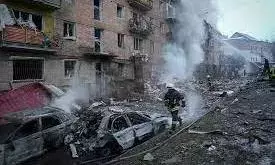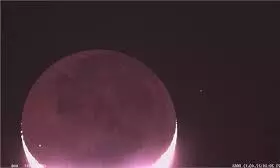
Meteorite crashes into Earth's moon, photographed by Japanese astronomer
text_fieldsTokyo: A meteorite crashed into the moon and a Japanese astronomer, curator of the Hiratsuka City Museum Daichi Fujii recorded the event.
He tweeted: "I was able to catch the biggest lunar impact flash in my observation history! This is a picture of the lunar impact flash that appeared at 20:14:30.8 on February 23, 2023, taken from my home in Hiratsuka (replayed at actual speed). It was a huge flash that continued to shine for more than 1 second. Since the moon has no atmosphere, meteors, and fireballs cannot be seen, and the moment a crater is formed, it glows."
The flash took place at 20:14:30.8 Japan Standard Time on February 23. Fujii told Space.com that the meteorite appears to have struck near Ideler L crater, slightly northwest of Pitiscus crater. The newly created crater could be around a dozen meters (39 feet) in diameter and may eventually be imaged by NASA's Lunar Reconnaissance Orbiter or India's Chandrayaan 2 lunar probe, wrote the outlet.
Meteors travel at around 30,000 mph and generate intense heat due to high velocity. They create craters and give out a flash of light. If the event is large enough and takes place in an area during lunar nighttime facing Earth, it can be seen.






















